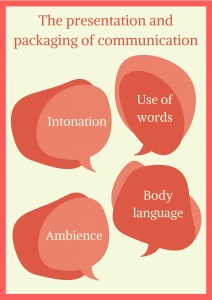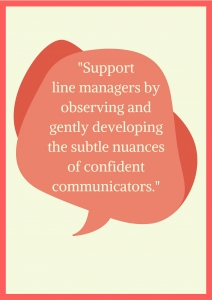Have you read The Chimp Paradox?
If you haven’t, you should. It’s a game changer.
As comms pros, we have a responsibility to support others with their communication skills.
We’re always on the lookout for creative and interesting ways to do this.
And this model is a winner. In a recent post we discussed how to help build organisations full of great communicators, not message regurgitators by supporting line managers, arguably the king cogs in the chain of communication.
Confidence improves communication
We talked about the need to help line managers by cascading confidence, not communication.
One way to do this is to go back to basics, ensuring that solid fundamentals are in place. Because when we know what we’re doing and we are in control, our confidence will soar.
That’s where The Chimp Paradox can help.
Steve Peters is the creator of The Mind Management programme for confidence, success and happiness and is famous for helping sports stars like Sir Chris Hoy and Ronnie O’Sullivan to achieve their goals.
He’s the author of The Chimp Paradox, a mind management model that describes how The Psychological Mind is made up of three separate brains: Human, Computer and Chimp.
Training the Chimp
The Chimp element controls emotions; it has a mind and personality of its own and is an extremely powerful machine. The Chimp can be your best friend and your worst enemy. Emotional behaviour and angry outbursts like road rage or heated personality clashes are all driven by our inner Chimp.
The Chimp is ever-present and must be managed appropriately. By helping line managers to recognise, nurture and train their Chimps, they can harness its strength and power to improve confidence, remain motivated, remove anxiety and communicate more effectively.
Peters dedicates an entire chapter to communication, explaining that:
‘If you don’t set time aside and work on communication then don’t be surprised if you don’t improve’.
It’s an obvious point, but all too often effective communication is taken for granted as line managers are expected to possess the necessary skills to communicate productively with employees.
While much of the way in which we communicate may be second nature, subconsciously doing what we’ve always done, it’s worth returning to basics and considering how we can sharpen skills when we focus on nurturing our Chimps.
It’s amazing how much we can improve with a little tweak and a gentle nudge here and there.
The presentation and packaging of communication
How we present a message is critical to effective communication. There are multitudes of ways in which messages can be packaged and to simplify things, Peters divides them into four groups; body language, intonation, use of words and ambience.
There are important takeaways we can remember from each of these four areas:
Be aware of body language
Body language is generally chimp-to-chimp, so miscommunication can signal all sorts of messy and emotional mishaps. According to some researchers, body language can account for over half of the message that is being conveyed so it’s a vital factor when line managers interact with employees.
- Simple considerations such as respecting body space, not crossing arms and being aware of our facial expressions can all help to improve communication without even saying a word.
Reflect on intonation
Around one third of our communication focuses on voice intonation and this can be broken down into three parts: speed, volume and emphasis. Speaking too quickly or loudly will alert the Chimp in the other person while speaking slowly will have the opposite effect, relaxing the Chimp. Taking things to the extreme may also have a negative effect as speaking too slowly or quietly can be frustrating.
- Help people listen and absorb messages by speaking steadily, using appropriate volumes and considering the impact that emphasis will make.
Choose your words carefully
Slight changes in words can alter the entire meaning behind a sentence. Picking the wrong word can have major consequences because the words we use have emotional connotations attached to them, unsettling Chimps.
For example, consider the difference between ‘I want you to…’ and ‘I would like you to…’. A very minor change can have a dramatically different effect. The first is a command, the second is a suggestion. The latter will almost always be better received by a Chimp than the first.
- Listen in, discuss and suggest minor tweaks where appropriate. By taking the time to change some of the words we use we can transform the way people react.
Understand the effect of ambience
The ambience of a person is a mixture of their demeanour, stance, mood and the way in which they interact with others. Often we don’t consciously think about this but our Chimps are all over it. The ambience we display can sometimes entirely outweigh any message we are trying to get across. 
- Unless we’re aware of how we’re coming across, we can’t make a conscious decision to improve it. Encourage line managers to think about the how they present themselves to others, also known as Chimp Management!
The skill of effective communication takes time and effort to develop and maintain.
We can support line managers by observing, coaching and gently developing the subtle nuances that make all the difference to successful, confident communication and well-informed, contented Chimps.
I recommend you grab a copy of The Chimp Paradox, get stuck in, and share it with your line managers. Share it with everyone.
It’s a fascinating read, a life-changing mind management model and an essential tool for all communicators…
And their Chimps!
















